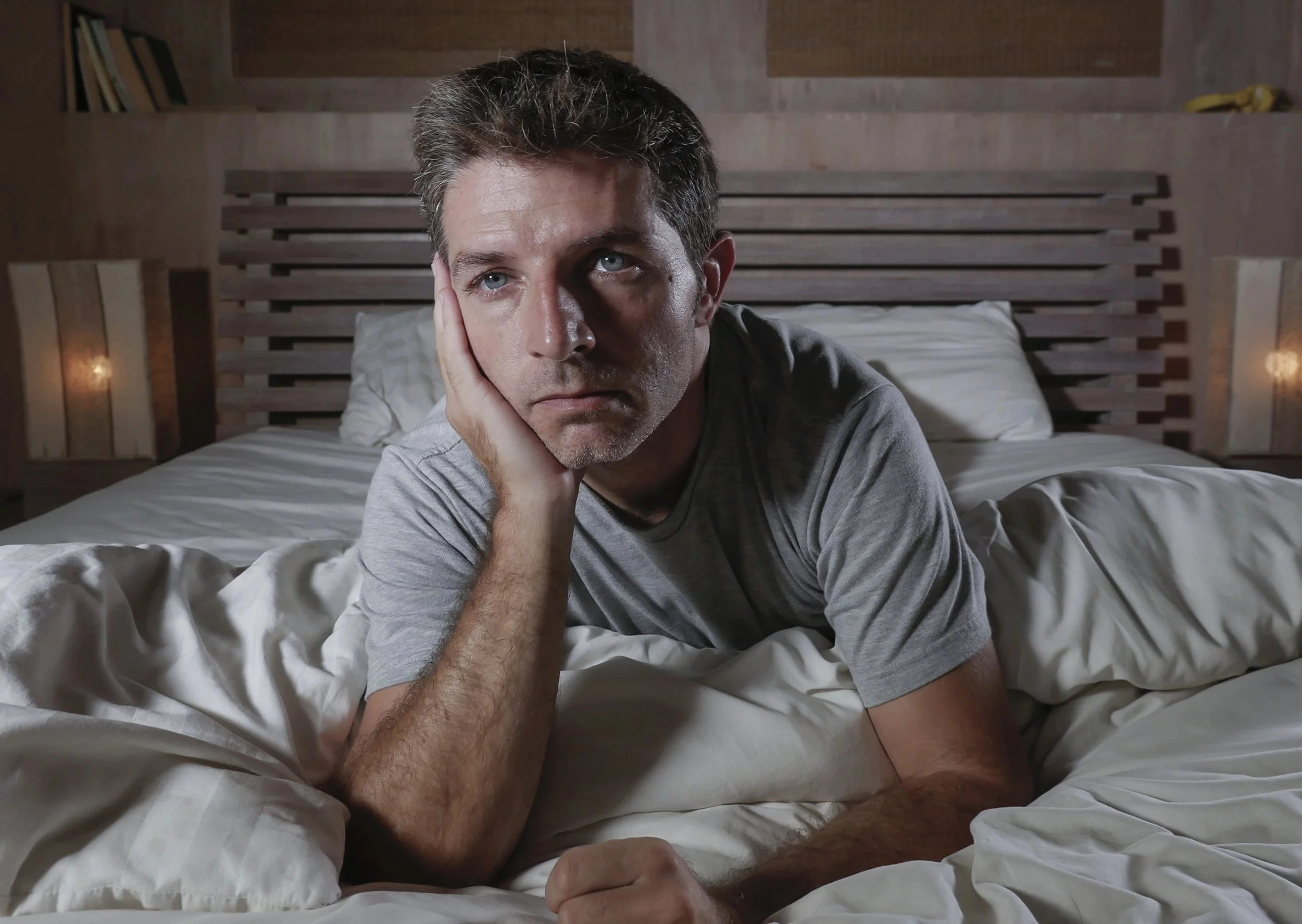Tips to Naturally Reduce Anxiety
Anxiety impacts millions of people across the world. It’s one of the most common mental health conditions and can affect everyone just a little bit differently.
What Are Negative Thought Patterns and How Can You Stop Them?
You’ve probably heard the saying, “You are your own worst enemy”. Many people tend to be self-critical, and you might be harder on yourself than you are with others. While those issues aren’t uncommon in small doses, they can become problematic when you’re dealing with consistent negative thought patterns.
From Perfectionism to Peace: Tackling Anxiety Head-On
Let me share something with you, something very important: perfection is a myth. Yes, you heard me right. Perfection is a beautiful illusion, an unreachable star we're conditioned to chase. But the truth is, we're all human, and being human means being beautifully imperfect.
How SSP Supports Emotional Regulation in Adults with Autism
Emotional regulation can be challenging for autistic adults. Learn how the Safe and Sound Protocol (SSP) helps support nervous system balance, sensory processing, and emotional resilience.
Anxiety Therapy in Driggs, ID: Tools to Regain Calm in a Fast-Moving World
Discover how online therapy helps anxious adults in Florida manage stress, burnout, and overthinking. Licensed therapist offering virtual sessions across the state.
Why The Root of Social Anxiety May Be The Fear Of Being Evaluated
Social anxiety disorder is often overlooked as someone just being shy or extremely introverted. But, when you actually deal with this kind of anxiety, you know that it’s much more than that.
Social anxiety can feel crippling. It can make you avoid certain situations and people and keep you from living to the fullest. But, it can be difficult to pinpoint a singular cause.
Recently, however, neuroscience research suggests that the root of social anxiety might be the fear of being evaluated. So, what’s the connection? How does worrying about how others might evaluate you cause such crippling social fear?
How Perfectionism Fuels Anxiety in Gay Men (and How to Let Go of It)
Perfectionism can create chronic anxiety and self-doubt for many gay men. Learn why this pressure exists, how it impacts mental health, and how LGBTQ+-affirming therapy can help break the cycle.
Affirming Your Identity: The Role of Therapy in LGBTQ+ Self-Acceptance
Therapy can be a powerful tool in LGBTQ+ self-acceptance, helping individuals navigate internalized shame, anxiety, and societal pressures. Learn how affirming therapy supports identity exploration and emotional well-being.
What to Do Between SSP Sessions to Support Your Nervous System
Maximize the benefits of the Safe and Sound Protocol (SSP) by supporting your nervous system between sessions. Learn effective strategies to enhance regulation and long-term healing.
How to Cope With The Feeling of Failure
No one likes feeling like a failure. Even if you understand that failing at something can foster growth, it doesn’t exactly feel good at the moment. Unfortunately, if you let that feeling sink in, it can cause you to spiral into self-doubt, low confidence, and a lack of motivation.
Feeling like you’ve failed can wreak havoc on your mental health. It’s far too easy for negative self-talk to take over, and that can lead to anxiety and depression and might keep you from trying things again.
Thankfully, it’s possible to shift your mindset into something positive. There are healthy, effective ways to cope with the feeling of failure that can make a big difference in how you feel about yourself, your efforts, and the future.
Let’s cover some coping strategies to help you silence negative self-talk and bounce back stronger.
Striving Beyond 'Just Right': The Intersection of Perfectionism and Anxiety
We've all been there, haven't we? The point where we cross the line from pursuing 'just right' to plunging into the realm of 'it has to be perfect.' It's a familiar terrain, unfortunately, for many of us. Perfectionism and anxiety, these twin invaders of our peace, can often make us lose sight of the balance in the search for 'just right.'
Anxiety Impacts More Than Your Head; How It Can Affect Your Heart and Health, Too
Most people recognize that anxiety is a mental health condition. There’s no denying how much it can impact your head. It can cause irrational fear, lead to depression, and lead you toward a state of constant uncertainty.
However, anxiety can also impact your physical health, too. Specifically, it can affect your heart health. Unfortunately, long-term anxiety can create more than just mental health problems. If your anxious symptoms start to impact your heart or other areas of the body, medical attention might be needed, and that can create a sort of vicious cycle that causes you to become even more anxious.
Let’s take a closer look at how anxiety can affect your heart and the rest of your body and what you can do to calm your anxious mind.
Anxiety Therapy in Ogden, UT: How to Regain Control When Life Feels Overwhelming
Ogden offers a mix of city life and natural beauty. But even with the Wasatch Mountains in view, many people here feel like they’re barely holding things together. Anxiety often doesn’t look dramatic it shows up in the background, making everything feel harder than it should.
How Perfectionism and Anxiety Stifle Creativity
We all have a little perfectionist inside us, don't we? It's that nagging voice telling us that what we're doing isn't good enough, that we could do better. But here's the thing: sometimes, that pursuit of perfection can stifle our creativity. It can make us so afraid of failing that we don't even try. And that's a problem.
Let's dig into this topic and see if we can find a way to silence that perfectionist's voice, shall we?
Anxiety Therapy in Tooele, UT: Why Support Shouldn’t Feel Out of Reach
Anxiety therapy in Tooele doesn’t have to be out of reach. Learn how online care can support your mental well-being.
The Brain and Anxiety: What Causes It?
Anxiety is one of the most common mental health conditions in the world. There are many potential causes and triggers, and it can look different for everyone. But, what about digging deeper?
Because anxiety is a mental health condition, it impacts the brain. What actually causes the brain to have anxiety? Which areas of the brain are affected?
The more you understand about the brain and anxiety, the easier it can be to let go of things like guilt or fear that something is “wrong” with you. That can help you take better care of yourself and get the help you need.
So, what causes anxiety in the brain?
Anxiety Therapy in Provo, UT: What Therapy Can (and Can’t) Fix
Provo is a city full of driven, capable people students, professionals, caregivers, and community leaders. But beneath the polished exterior, many are carrying anxiety that goes unseen. The perfectionism, people-pleasing, or fear of letting others down can feel impossible to name, let alone unlearn.
Are Anxiety Disorders Genetic?
Anxiety is one of the most common mental health conditions in the world. But, experts still can’t pinpoint exactly what causes it.
They do know that there are different factors that play a role in anxiety, including environment, experiences, and even genes.
Yes, anxiety disorders can be hereditary.
That doesn’t mean you’ll automatically have anxiety if it runs in your family. But, research has shown that genetics can influence your risk of developing anxiety, and you’re more likely to experience it if someone else in your immediate family already deals with it.
Let’s take a closer look at how genetics can impact anxiety, as well as some of the other causes.
Anxiety Therapy in Logan, UT: How to Find the Right Online Therapist for You
Logan is known for its mountain views, tight-knit community, and peaceful lifestyle. But that doesn’t mean everyone here feels calm inside. Anxiety doesn’t care how beautiful your surroundings are it can show up as racing thoughts, sleepless nights, social overwhelm, or that vague feeling that something just isn’t right.
A Journey Through LGBTQIA+ History and Celebrations
October is LGBT History Month. While we might be past that, we’re certainly in the time of year when the focus is on holidays and celebrations.
We mustn’t forget to think about the history of the LGBTQIA+ community, especially this time of year, as we gather with friends and family who might not fully understand.
With that in mind, let’s take a quick journey through LGBTQIA+ history and celebrations. It’ll give you some talking points to share this season and beyond, and you’ll be ready to join in on the celebrations when next October rolls around!



















